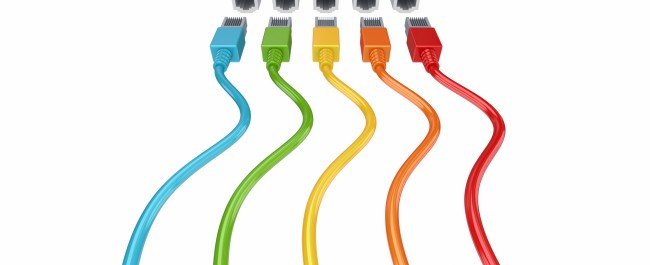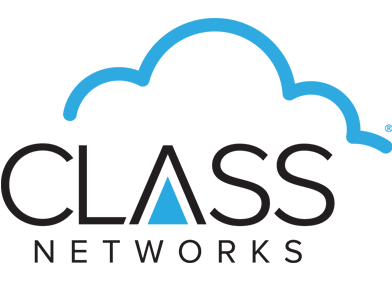
There are multiple variations of business phone lines available to organisations, sometimes it’s difficult to know which phone line is best for you; or even what each line type is for and what it does.
This article is aimed at providing a simple, easy to understand breakdown of the various telephone line types there are out there. Whilst all of these lines are still currently in use, there is an upcoming switch off to the WLR voice network which means these legacy lines will no longer be available in the future. Moving to a cloud service will ensure efficient business communications and offer a host of benefits.
Let Class Networks help your organisation to communicate using the latest and most efficient technology, contact our team today on 0333 800 8822 to discuss your options.
PSTN line
Public Switched Telephone Network (PSTN) is the analogue network for residential and business customers in the UK. Analogue lines are single lines that are primarily used for:
- Making voice calls
- Connecting to fax machines
- Franking machines
- PDQ machines
- Connecting to a modem for dial up internet
Issues with incompatibility
If your business broadband and telephony are sharing the same analogue line and your organisation requires more lines (using the same number) you would need to order a multiline telephone system (see below).
However, your broadband service will be removed if a line is changed to a multiline due to the voice only nature of the service. To work around this you would need to have a new single residential or business line installed for the broadband to operate on, then after that is live, upgrade the original single line to a multiline; allowing you to retain your telephone number on the original line by upgrading to multiline.
Multiline
A multiline is a group of telephone lines with one telephone number. The first line is known as the main exchange line, whilst the extra lines are known as auxiliary lines.
The additional line/s (or auxiliary line) is added to the main telephone exchange line so there’s no need for a new number which means no changes to advertising, marketing material, stationary, etc.
Having an auxiliary line added to an existing PSTN (analogue) line means that if a call comes through to an engaged line, the call will simply be passed to the next available line and it’s the same on outgoing calls. When your employees lift the handset the multiline will trip over to the next available aux line and go out from there.
Theoretically, there is no limit to how many auxiliary phone lines can be attached to one telephone number. However, the size available is limited by your local exchange’s capacity. This service is suitable for small businesses.
Digital lines
Class Networks provide two different types of Digital lines: ISDN2e and ISDN30e. ISDN stands for Integrated Services Digital Network. The e is an abbreviation of the signalling standard (ETSI – European Telecommunications Standards Institute. This is the body responsible for technical standards in telecommunications in Europe).
ISDN2e
ISDN2e is a high-performance voice and data service suitable for small offices. A basic installation allows you to connect up to 8 digital devices and make 2 calls at once using business phone numbers. This reliable service includes the following features:
- ISDN2e is the equivalent of two digital telephone lines known as channels that operate at speeds of 64kbps.
- Two channels can work independently allowing you to make a call, use the internet or receive a fax at the same time.
- An ISDN2e line can offer speeds of up to 128kbps when the two channels are combined to connect to the internet, which is more than twice as fast as an analogue modem.
- As the connection is digital, there is the added benefit of increased clarity for voice calls and larger data files and emails can be sent and received more quickly and securely.
If your business grows and requires more connections further down the line, you can add further ISDN2e circuits to the current installation, increasing the number of simultaneous connections and/or available data bandwidth. However, it is more effective for organisations to take an ISDN30e channel if your business needs more than 6 telephone lines, or feel you will need more lines in the future.
There are two types of ISDN2e lines:
ISDN2e Standard:
These have a maximum size of 2 channels, and cannot be any bigger than this.
They do not have SNDDI’s (Single Number Direct Dial In) or DDI’s (Direct Dial In). Instead they have MSNs (Multiple Subscriber Numbers). These are individual numbers that can be requested and added to the line rental. They do not come in blocks, just as single numbers. They behave and are programmed into phone systems in pretty much the same way as SNDDIs on ISDN2 systems are.
ISDN2e Systems:
These are very much like ISDN30es. They have ranges of DDIs on them and also SNDDIs. They are by far the more common of the two ISDN types. The number of DDI and SNDDI are restricted to five ranges (including the main line if this is not part of a DDI range).
ISDN30e
ISDN30e is an enhancement to the ISDN30 service. ISDN30e is provided with the latest network software, which provides you with access to extra features such as; Call Forwarding of Voice and Data calls.
ISDN30e is an advanced digital solution for larger businesses. It is the equivalent of 30 analogue lines each of which work at 64kbps. The use of fibre optic cables, which is more reliable than traditional copper wires, provides great advantages for larger organisations.
ISDN30e is a high-performance voice and data service for modern business. The digital technology and management features offers higher line quality, which allows for:
- Rapid connection
- Clear voice communications with other ISDN users
- Ideal for networks linking two or more offices
- Provides staff with individual DDI numbers
An ISDN30e line provides the capacity for between 8 and 30 continuous voice calls. These calls can be both from people calling into an office, or the calls made from the office to other people. Each call made will require 1 channel. If your organisation needs more than 30 channels, you would need to order an additional ISDN30 line.
With an ISDN30e line you can have an unlimited number of DDI numbers (but restricted to five ranges), allowing your customers and business contacts to dial directly through to staff members, without passing through a switchboard.
Find the right phone system for your business
Want to find out more or discuss what option is best for your organisation? Please give our team a call on 0333 800 8811. We’d be happy to find the perfect solution for your business needs.
Posted in News
